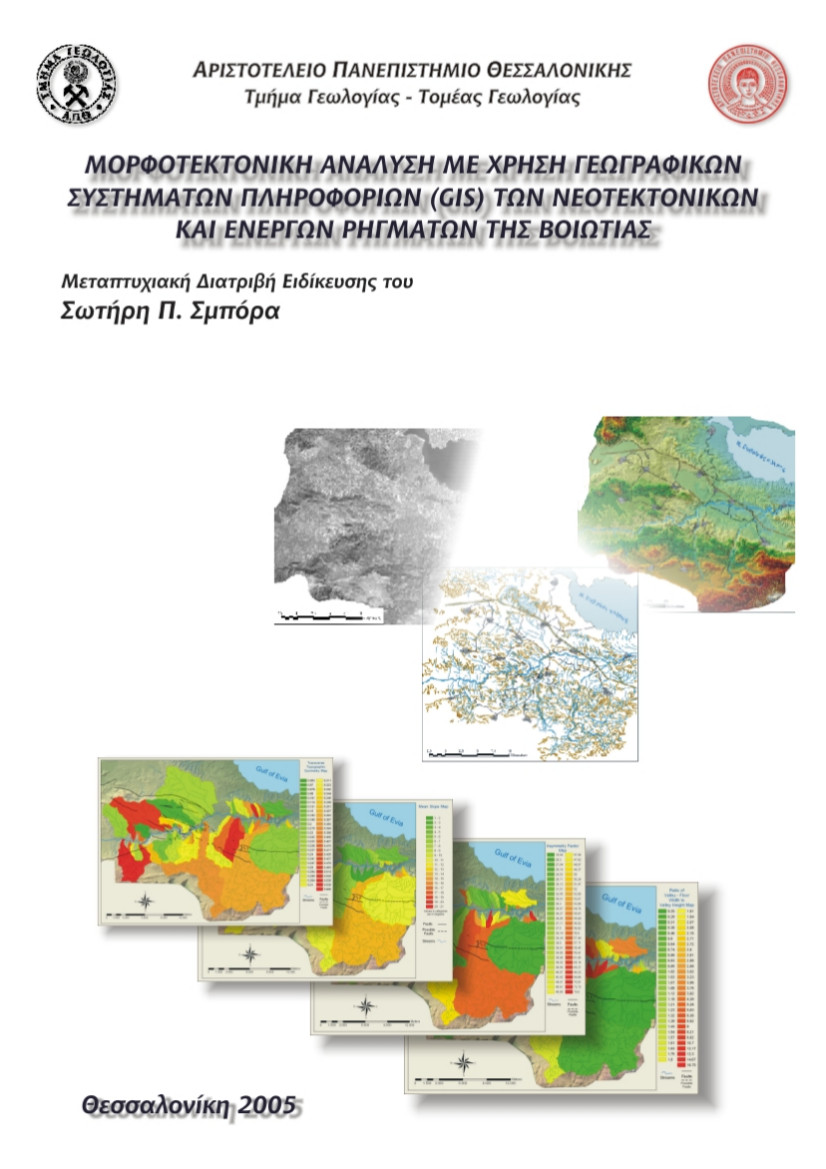
Μορφοτεκτονική ανάλυση με χρήση γεωγραφικών συστημάτων πληροφορίων (GIS) των νεοτεκτονικών και ενεργών ρηγμάτων της Βοιωτίας.
Περίληψη
he northern area of Parnitha Mountain is an eastern part of a broader, tectonically active, region (the Oropos – Erithres – Kaparelli fault zone) that lies between the active fault zone of Corinthian Gulf to the west and the South Evoikos gulf to the east. The active faults mainly dip to the north and have created the E – W trending valley of Asopos river which follows the active fault system. The main purpose of this dissertation, was to study the morphological effects of the neotectonic faults in the area which includes the northern foothills of Parnitha mountain and a part of the valley of Asopos river. In order to accomplish that, the active faults had to be mapped at 1:50,000 scale (and 1:25,000 locally). Five major faults were recognized striking WNW – ESE (Tanagra, Kallithea-Mavrovouni, Asopia-Asopos, Armakas and Avlonas faults) and one striking SW – NE (Dafni
fault). There are also many minor faults that affect the course of Asopos river. In general, the tectonic regime is represented by subsequent tectonic horns that mainly consist of limestone and grabens that are filled with Neogene sediments. Afterwards, digital processing followed with the use of G.I.S. software dividing the area into 59 valleys according to major streams of Asopos valley. A Digital Elevation Model was produced so as to calculate a series of morphotectonic indices such as Asymmetry Factor, Hypsometric Integral, mountain-front sinuosity etc. that correlate active tectonics with morphology. The results suggest that most of the faults can be characterized as active and are responsible for several ground tilting and changes in the pattern of the drainage system. Although Tanagra fault is a major tectonic feature, it seems that there is not any recent significant movement present especially at its east end. Very strong effects in morphology have the Kallithea-Mavrovouni, Asopia-Asopos and Armakas faults, where streams either follow faults’ direction or being traversed by them.
fault). There are also many minor faults that affect the course of Asopos river. In general, the tectonic regime is represented by subsequent tectonic horns that mainly consist of limestone and grabens that are filled with Neogene sediments. Afterwards, digital processing followed with the use of G.I.S. software dividing the area into 59 valleys according to major streams of Asopos valley. A Digital Elevation Model was produced so as to calculate a series of morphotectonic indices such as Asymmetry Factor, Hypsometric Integral, mountain-front sinuosity etc. that correlate active tectonics with morphology. The results suggest that most of the faults can be characterized as active and are responsible for several ground tilting and changes in the pattern of the drainage system. Although Tanagra fault is a major tectonic feature, it seems that there is not any recent significant movement present especially at its east end. Very strong effects in morphology have the Kallithea-Mavrovouni, Asopia-Asopos and Armakas faults, where streams either follow faults’ direction or being traversed by them.
Πλήρες Κείμενο:
PDFΕισερχόμενη Αναφορά
- Δεν υπάρχουν προς το παρόν εισερχόμενες αναφορές.
